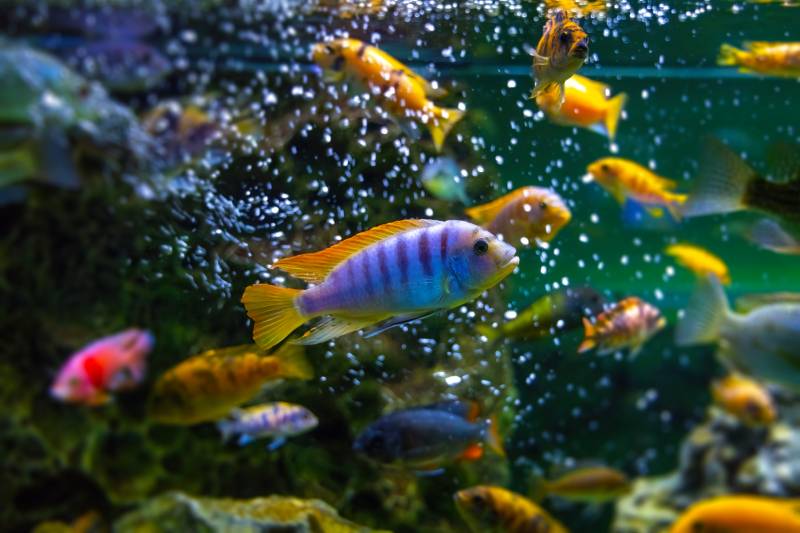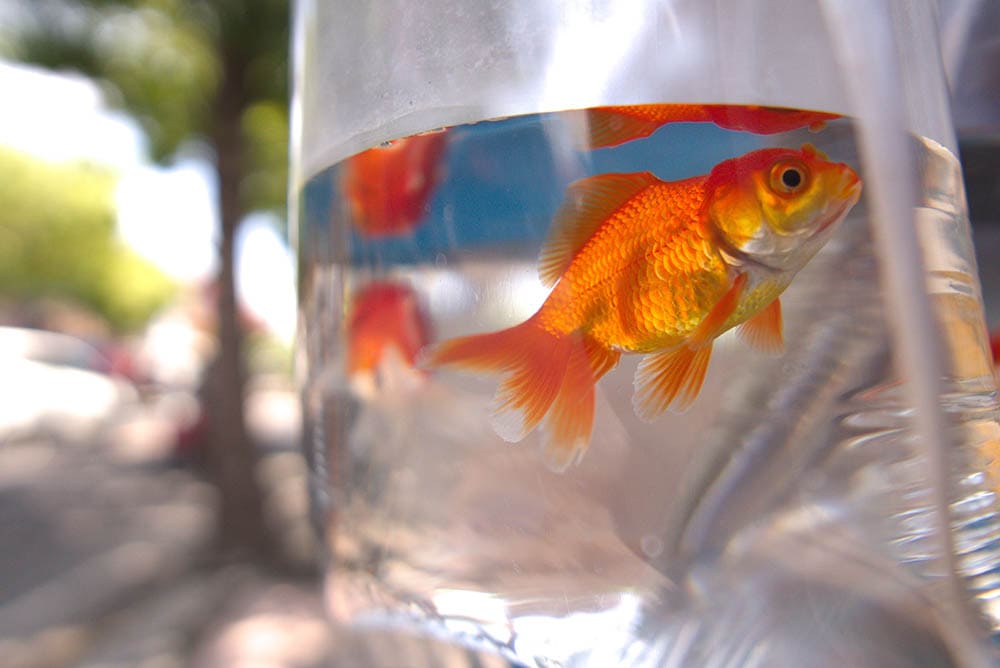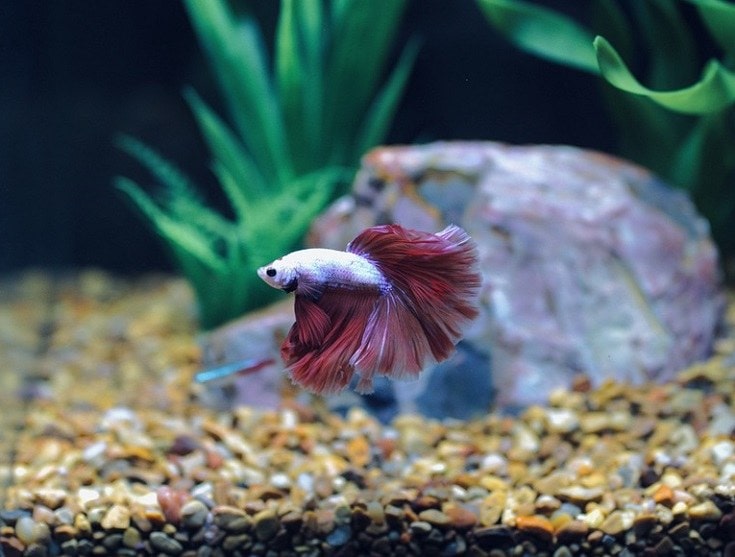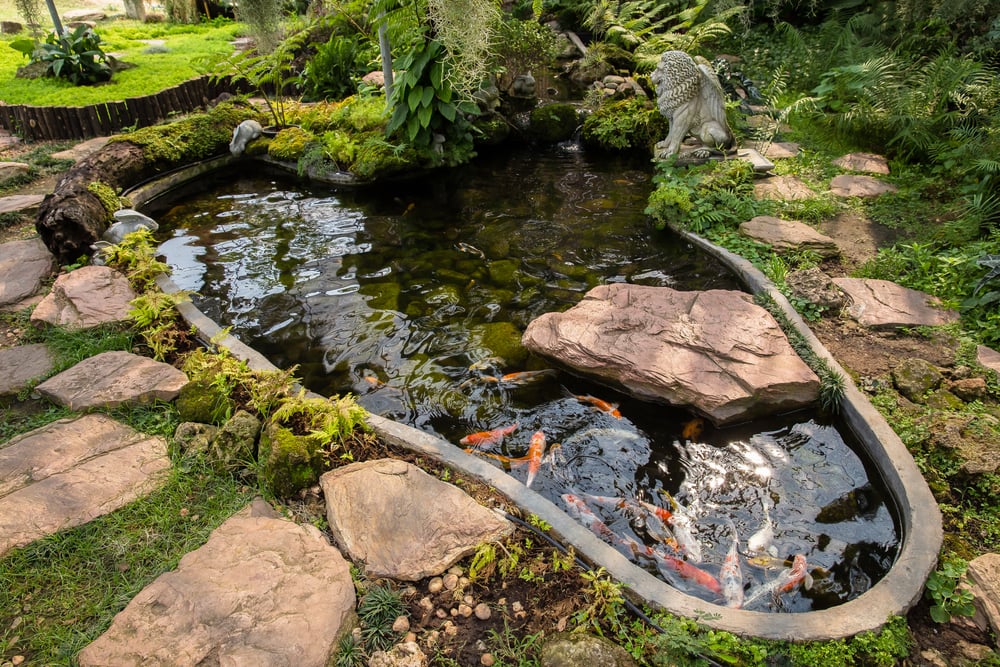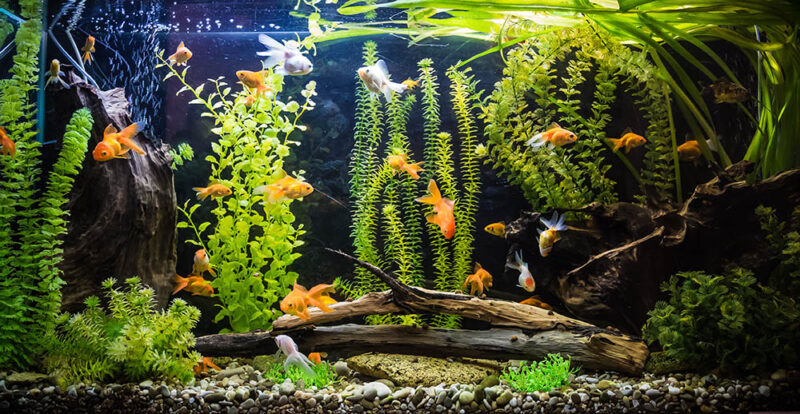Appropriate water flow is essential to the health of your aquarium. Pumps and filters help introduce oxygen into the water, maintaining the health of your tank livestock. Wavemakers are a great way to maintain movement in your tank, introduce oxygen to the water, and create a more natural environment for your fish and plants. If you have a reef tank, you likely already know about the importance of a wavemaker to keep your corals healthy.
Wavemakers are easy to install and come at a variety of price points, so you’ll be able to find one on just about any budget. There are lots of options on the market, though, which can make it difficult to choose the right wavemaker for your aquarium. Use these reviews to start you on your journey to find the perfect wavemaker for your tank.
A Quick Comparison of Our Favorites in 2024
| Image | Product | Details | ||
|---|---|---|---|---|
| Best Overall |

|
Hydor Koralia Evolution Pump |
|
Check Price |
| Best Value |

|
SunSun JVP-110 Powerhead Wavemaker |
|
Check Price |
| Premium Choice |

|
Jebao Marine Submersible Pump with Wave Controller |
|
Check Price |

|
Current USA eFlux Wave Pump Manifold Hub |
|
Check Price | |

|
Hydor Koralia Wi-Fi Controllable Wavemaker Pump |
|
Check Price |
The 9 Best Aquarium Wave Makers
1. Hydor Koralia Evolution Pump – Best Overall
| GPH: | 550–600 |
| Mounting: | Magnet, suction cup |
| Extra Features: | Vibration absorbing support |
| Price: | $$ |
We’ve found the best overall wavemaker to be the Hydor Koralia Evolution pump. This wavemaker processes between 550 and 600 gallons per hour and can be used on tanks with glass or acrylic up to ½-inch thick. Compared to older Koralia models, this one uses 50% less power while creating 20% more water flow.
The shaft-less impeller technology makes it safe and appropriate for many types of tanks, and it features a sphere joint that allows you to adjust the flow direction. It has a patented vibration absorbing magnet and suction cup support, so you won’t have to worry about a noisy wavemaker with this one.
This is a relatively large pump, so it may not be suitable for smaller tanks or tanks with dense foliage and décor.
2. SunSun JVP-110 Powerhead Wavemaker – Best Value
| GPH: | 528 |
| Mounting: | Suction cup |
| Extra Features: | 360-degree water movement |
| Price: | $ |
For anyone on a tight budget, the SunSun JVP-110 Powerhead Wavemaker is the best aquarium wavemaker for the money. It’s quick and easy to install, thanks to its suction cup mounting, and it has an ultra-quiet operation.
This wavemaker can process 528 gallons per hour and has an articulating ball joint that allows up to 360 degrees of water flow, which prevents debris from settling and will help keep your tank clean. This wavemaker is submersible but doesn’t have any oil in or on it, so you won’t have to worry about water contamination.
Some purchasers of this wavemaker have commented on the cheap feeling of the plastic, but this is to be expected at the low price point.
3. Jebao Marine Submersible Pump with Wave Controller – Premium Choice
| GPH: | 3,693 |
| Mounting: | None |
| Extra Features: | 10-speed controller |
| Price: | $$$ |
If you have a big budget for your wavemaker, then the Jebao Marine Submersible Pump with Wave Controller is the best option. This powerful pump can process 3,693 gallons per hour and features a 10-speed controller that allows you to control it externally.
This submersible pump automatically shuts itself off if it senses the water level is too low, ensuring the motor doesn’t burn itself out. This wavemaker uses 65% less power than similar models, and it’s free of copper components, making it safe for use in tanks with invertebrates.
It’s extremely durable and is built for long-term use, but you will pay a premium price for this wavemaker.
4. Current USA eFlux Wave Pump Manifold Hub
| GPH: | N/A |
| Mounting: | Bracket |
| Extra Features: | Allows up to three pumps |
| Price: | $ |
The Current USA eFlux Wave Pump Manifold Hub isn’t actually a wavemaker, but this budget-friendly hub allows you to connect up to three wavemakers or pumps to it. This allows you to program flow and wave settings for each pump. The hub includes a protective silicone cover that ensures the hub doesn’t acquire wear from salt and water, a micro-USB cable, and a mounting bracket.
Once you’ve connected your pumps to the hub, you’ll be able to provide your tank with a real ocean experience. In order to get the most use out of this hub, it’s recommended that you also purchase the LOOP control system that allows you to remotely control program flows and wave settings.
5. Hydor Koralia Wi-Fi Controllable Wavemaker Pump
| GPH: | 1,050 |
| Mounting: | Suction cup, magnet |
| Extra Features: | Wi-Fi controls |
| Price: | $$ |
The Hydor Koralia Wi-Fi Controllable Wavemaker Pump processes over 1,000 GPH, making it suitable for tanks up to 50 gallons. It offers six water flow modes, including constant flow, wave, random, smooth, feed, and night. Installation is made easy with the suction cup and magnet combination, and you’ll be able to quickly and easily program the pump through the Hydor app and a Wi-Fi connection. This small wavemaker can easily be hidden behind decorations, rocks, and plants. Although powerful, the small size of this pump may allow debris to collect in some areas within your tank.
6. SunSun JVP-132 Fish Aquarium Wavemaker
| GPH: | 2,113 |
| Mounting: | Magnet |
| Extra Features: | 360-degree rotation |
| Price: | $ |
The SunSun JVP-132 Fish Aquarium Wavemaker is a great budget-friendly wavemaker option that processes up to 2,113 GPH. With 360-degree rotation, this wavemaker will create waves and prevent debris from settling in your tank. It’s made without any oil, so it won’t contaminate your tank, and it has an easy magnet installation, so you’ll have it set up in no time. It’s designed to operate very quietly as well.
As mentioned in the previous SunSun product, some users report the plastic of this wavemaker feeling cheap and delicate, although the functionality of the wavemaker is not reduced by the cheap-feeling plastic.
7. Jebao SLW-30 Fish Aquarium Wavemaker
| GPH: | 3,434 |
| Mounting: | Magnet |
| Extra Features: | Can function on a wireless mode |
| Price: | $$ |
The Jebao SLW-30 Fish Aquarium Wavemaker is a small but powerful wavemaker that can pump up to 3,434 gallons per hour. It offers a large rotation angle and allows for adjustments of wave direction and flow rate. This wavemaker can function wired or wirelessly, and it contains no electronic components inside the submersible part of the pump, prolonging the life of your wavemaker.
It operates quietly and is quick and easy to install. However, the magnet may not be strong enough to secure this wavemaker through thick glass, so it may not be suitable for some larger tanks that are made with thick-width glass.
8. Current USA eFlux Accessory Wave Pump
| GPH: | 2,100 |
| Mounting: | Magnet |
| Extra Features: | Four modes |
| Price: | $$$ |
The Current USA eFlux Accessory Wave Pump can process up to 2,100 gallons per hour, and this wavemaker offers four modes – steady stream, feeding, surge flow, and wave pulse. With the addition of a LOOP control system, this pump can be fully programmed, but the control system must be purchased separately. The magnetic bracket makes for easy installation.
This wavemaker features a vibration-absorbing pad, ultra-quiet sealed motor, and energy-efficient magnetic propellor pump. The swivel bracket ensures appropriate water flow for the size and design of your tank. This is one of the more expensive wavemakers we reviewed, so be prepared for a premium price.
9. OASE StreamMax Classic 5000 Pump
| GPH: | 1,320 |
| Mounting: | Suction cup |
| Extra Features: | Automatic startup |
| Price: | $$ |
The OASE StreamMax Classic 5000 Pump allows you to create wide and narrow flow patterns in your tank, as well as control the water flow rate to meet the needs of your tank. This pump is small and designed to be quiet, and it’s designed to automatically restart itself after a power outage, so you won’t have to worry about your tank losing water flow for too long. It offers 90 degrees of adjustability to customize the water flow, which is less adjustability than many of the other wavemakers we reviewed.
Buyer’s Guide: Choosing the Best Aquarium Wave Maker
Why Do You Need a Wavemaker?
Wavemakers might not be on every aquarium owner’s radar, but these specially designed pumps can be extremely beneficial. While they’re typically something that’s considered more in reef and saltwater tanks, they can also be used in freshwater tanks to maximize oxygenation and offer natural water flow for fish that prefer it. Wavemakers allow you to mimic the natural environment of lakes, rivers, oceans, and streams.
One benefit of wavemakers that many people don’t realize is that they can help reduce aggression in some tank livestock. This works essentially by distracting aggressive fish with the water flow, discouraging them from turning their attention to other tankmates.
Another great benefit of wavemakers is that they’re designed to maintain water movement, which doesn’t allow for debris buildup or blank spots to appear in your tank. This can help improve water quality by keeping debris moving, ensuring it makes its way into the filtration system.
Types of Wavemakers
There are two types of wavemakers: AC and DC powerheads. AC-powered motors are for continuous use. You often can’t control the pump speed or vary the flow pattern. DC powerheads offer more control. You can control both the flow patterns and pump speed with a control panel, which is often your smartphone. Some even have options like feed holds, temperature alerts, and operating schedules.
Choosing the Right Wavemaker
First and foremost, make sure you’re buying an appropriate size for your tank. This is important because narrow streams are better for long aquariums, while wide or conical patterns are better for short aquariums.
You also want to consider the corals in your tank. This matters because SPS corals will require stronger currents than LPS corals. SPS corals often grow in shallow reefs and on top of rocks, while LPS corals are often in deeper waters. You want to ensure your currents match up with the corals in your aquarium to make the environment as ideal for them as possible.
Finally, consider your aquascape and imagine the flow pattern and how it will work in your aquarium. Rocks will deflect water and flow and change how it moves in the display, so you might need to play with the pump placement until it moves the water most effectively.

Conclusion
The best aquarium wavemaker we reviewed is the Hydor Koralia Evolution Pump, which offers excellent water flow using less energy than similar models. The most budget-friendly pick is the SunSun JVP-110 Powerhead Wavemaker, which offers 360-degree water flow and a powerful wavemaker for a fair price. If you’re seeking a premium wavemaker, then the best option is the Jebao Marine Submersible Pump with Wave Controller, which offers maximum customization with 10 speeds that can be adjusted with the included remote.
See Also:
Featured Image Credit: hodim, Shutterstock
